Table of Contents (click to expand)
Coral reefs form from the skeletons of dead coral that have built up over time. These reefs are created through a symbiotic relationship between the coral and single-celled algae. As the coral dies, the reef breaks into pieces and compact.
Our planet displays astonishing biodiversity. It is brimming with complex ecosystems harboring a plethora of diverse living organisms that share a unique relationship with their surroundings. This relationship is essential for a thriving ecosystem; an imbalance can result in enormous damage to the flora and fauna.
A well-balanced ecosystem provides the necessary conditions for natural evolution to create complex interdependencies between different species and enables the varying life forms we see. One particularly diverse ecosystem is found underwater, the importance of which can only be grasped in knowing that it houses 25% of all marine life, while occupying less than 2% of the ocean floor. These sub-aquatic megacities are called Coral Reefs.
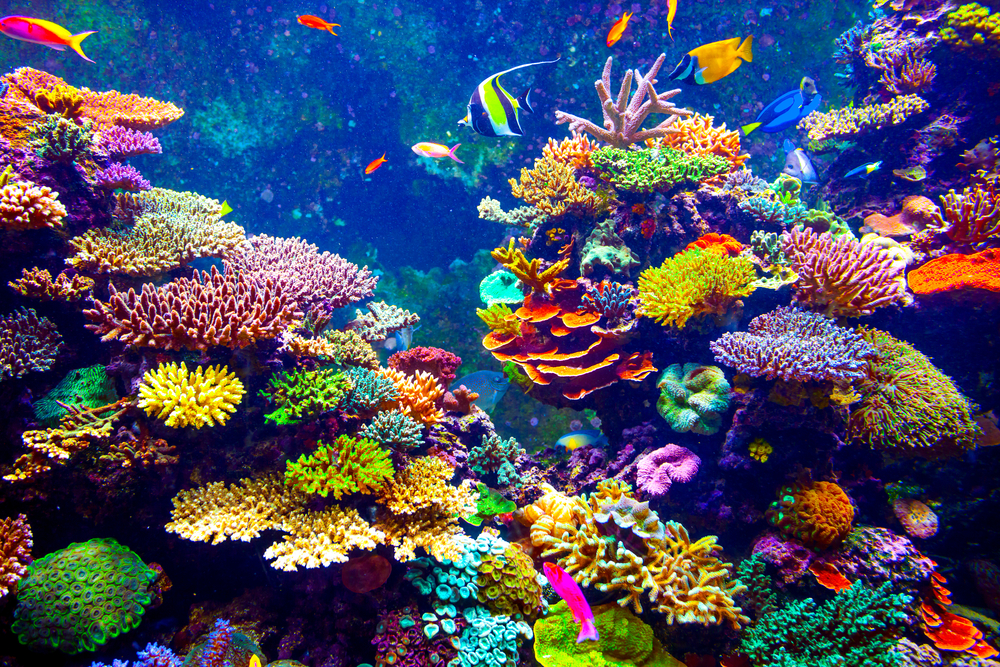
The outreach of the coral ecosystem is not restricted to those species remaining underwater, but also affects terrestrial animals, including humans. It helps in providing food, protects shorelines and creates jobs for people, whether through its natural medicines or function as a tourist attraction. It is estimated that the value coral reefs provide is $ 172 billion in the U.S. alone each year.
In return, we, the terrestrial animals, pose a great threat to the balance of this ecosystem by excessive and destructive fishing, pollution, greenhouse emissions, and endless other harmful practices. In order to protect and maintain a thriving coral ecosystem, it is imperative to understand what they are and how they’re formed, so let’s “dive” in.
What Are Corals?
Corals are invertebrate marine animals in the class Anthozoa of the Cnidaria phylum. Corals are polyps in terms of structure, much like sea anemones, to which corals are related. Polyps are elongated cylinders with vase-like bodies.
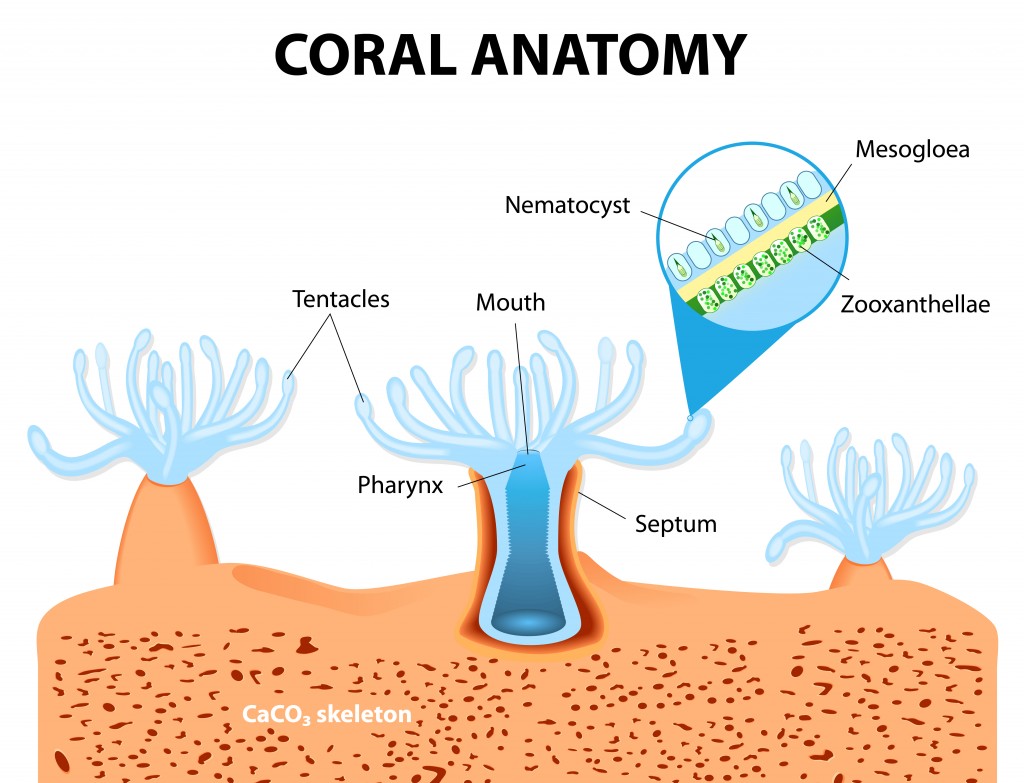
Corals live in dense colonies of elongated cylinders, which are like tin cans open on just one side. The open end of the polyp has a mouth surrounded by circularly placed tentacles. These tentacles provide a source of food due to specialized cells like nematocysts, which provide polyps the ability to capture small organisms that pass by.
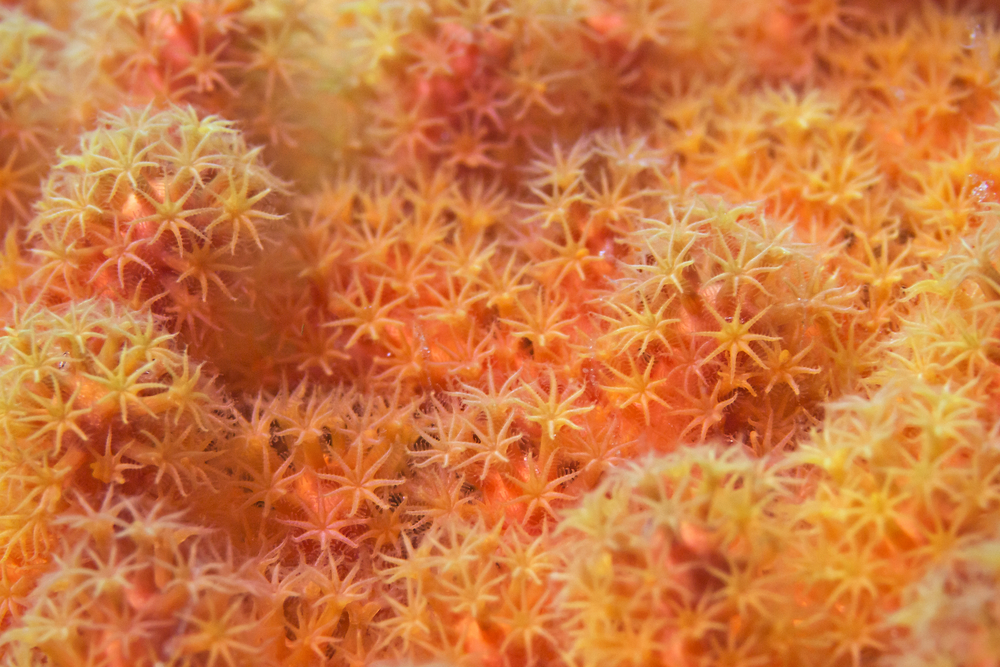
Reproduction in corals is peculiar, as they can either be male or female—or even both at the same time! Coral can also reproduce both sexually and asexually.
Their asexual reproduction is a result of cloning, through fragmentation or budding. Budding occurs when a polyp matures and divides, thus creating an identical polyp. Fragmentation takes place when an entire colony divides and creates a new, separate colony.
Sexual reproduction entails eggs getting fertilized by sperm, which could occur between different colonies, resulting in greater genetic diversity. Such fertilization results in free-swimming larvae that settle themselves on a substrate and become polyps. This could take days or weeks, but in some cases, just a few hours!
Coral builds reefs that contain the coral colonies and a framework of a hard skeleton composed of calcium carbonate. This reef building arises from a very important symbiotic relationship between corals and single-celled algae living in the polyps called zooxanthellae. These algae photosynthesize and share some of their food with their hosts. In turn, the corals give the algae some much-needed nutrients. This arrangement allows the coral to grow quickly, which helps in building enormous reefs, provided they remain undamaged or impacted by human populations.
Also Read: Will Earth Remain The Same If All Coral Reefs Die?
From Corals To Coral Reefs
Zooxanthellae use sunlight for photosynthesis to create their food and use this “food” as a bartering tool with the coral for nutrients. They also secrete calcium carbonate, which forms the sturdy skeleton of the reefs. Reefs typically grow slowly, at roughly an inch per year, but faster-growing reefs have been seen to grow as quickly as 6 inches per year.
Most coral reefs are termed “fringe reefs”, as they are found on the fringes of a coastline to a larger landmass. This is because they primarily grow in shallow waters in close proximity to the shores of small islands or big continents.
Atoll
Coral reefs are also known to form near volcanic islands. At the point of the volcano’s imminent death, it sinks, whereas the coral reefs that have been growing on the surface remain exposed, often in a full or partial ring. In between the sinking island and the reef, a lagoon forms, leaving only the barrier reef the volcano had formed around itself. This is called an atoll.
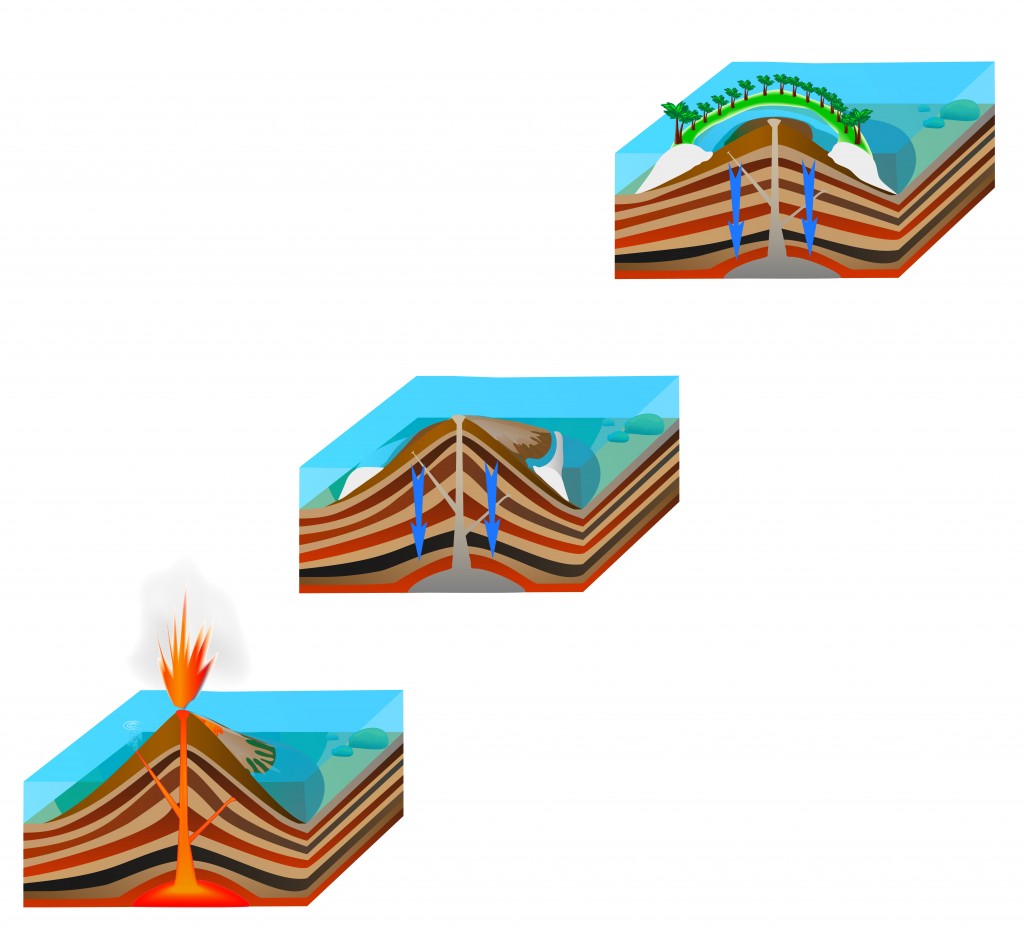
As corals die, a reef will break into pieces and compact. The life of a colony can range from decades to centuries, with some surviving for more than 4,000 years! This is determined by the annual ring the reef makes, just like the rings found in trees. The largest reef in the world, The Great Barrier Reef in Australia, began growing around 20,000 years ago.
Also Read: What Are These Rings In The Middle Of The Ocean?
Destruction And Conservation
Earth’s rising carbon dioxide levels are a cause for concern, as this raises the sea level and acidifies the ocean. An increase in water level causes the corals to lose the zooxanthellae, which help the coral access food. This condition is called coral bleaching, the continued effect of which completely kills coral colonies. An acidic ocean also makes it difficult for the corals to make their reefs on calcium carbonate skeletons. If acidification increases, it can also break the existing corals apart. Scientists have landed on a catastrophic prediction that by 2080, the acidification of our oceans will be enough to dissolve all the coral reefs in the world.
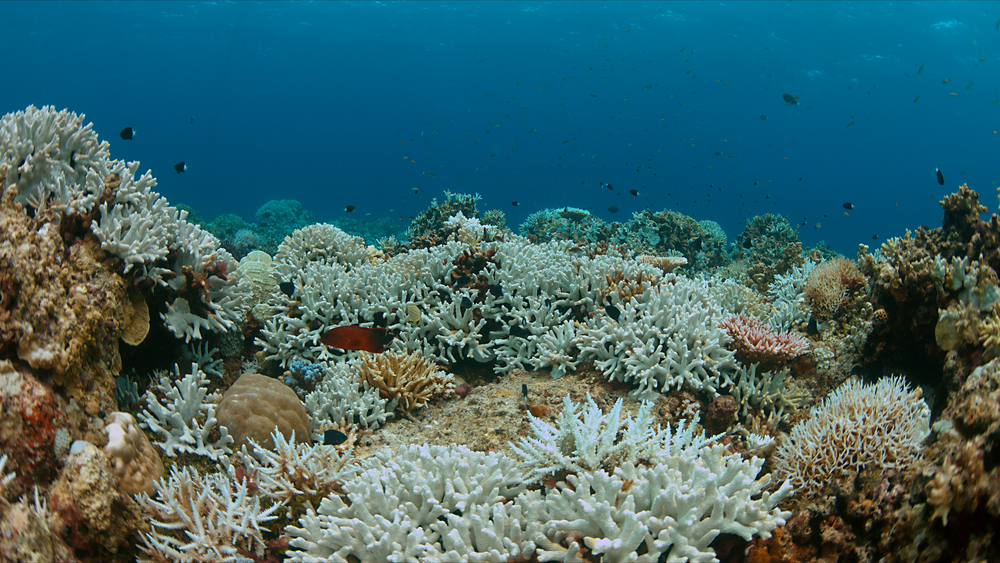
Along with taking the correct actions for combating climate change, it is imperative to establish healthy fishing practices to further conserve the coral reefs. It is clearly seen that the coral reefs being protected today are much healthier and have a sustained population of corals. Human interventions with struggling colonies have also been made to attract small marine invertebrates through the ARMS project; this effort consists of planting a reef-like structure on the ocean floor that mimics the characteristics of a carbonate skeleton.
A mix of conservation and intervention is critical for coral reefs to survive; these marine structures are beautiful, colorful and teeming with diversity, and should be protected so they can be enjoyed for generations to come!

How well do you understand the article above!

